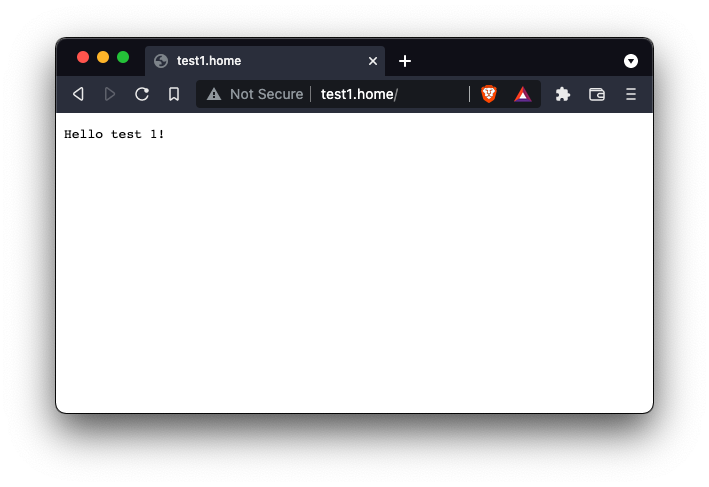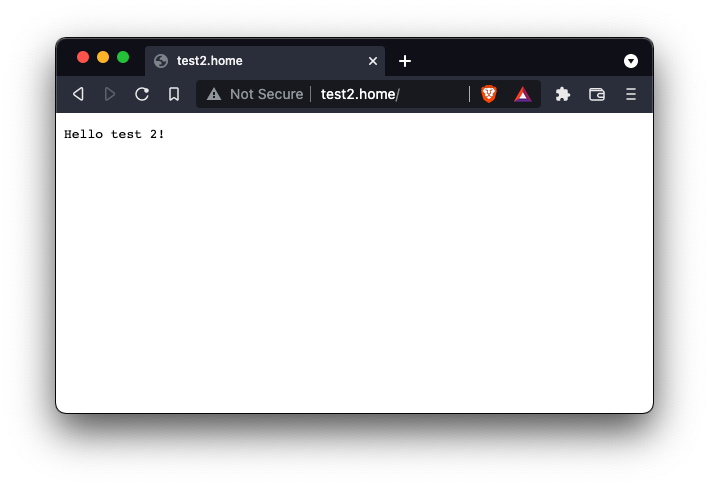Hosting multiple services on one home server with the help of Pi-hole
The purpose of this project is to verify that I can host multiple web sites/services on the same machine, where each site/service has a unique domain name.
I don’t want to add host file entries for all my services on all my devices, so it became obvious I needed a local DNS server where I could control DNS records myself. I have an old Raspberry Pi (Model B, 512MB RAM) which I installed Pi-hole on.
For serving the different services, I decided to use the Nginx web server. By adding a new server block for each service,
I’m able to forward requests for specific domains to a specific address and port with proxy_pass. If you’re using the Apache web server,
the same can be achieved by using virtual hosts.
I tested the whole thing with two “hello-world” type node apps running on different ports.
Summary:
- Pi-hole for local DNS resolution
- Nginx as web server with proxy pass to multiple services running on the same machine
- NodeJS apps for having content to access when testing
Details
Pi-hole
I’m using a default installation of Pi-hole. I turned all the privacy settings to the strictest setting, as I don’t want to monitor all my family’s network activities (Settings -> Privacy -> Anonymous mode).
The only other change I did to Pi-hole was to add two local DNS records, each pointing to my Windows desktop.
- test1.home -> 192.168.86.213
- test2.home -> 192.168.86.213
Main router DNS
For all the devices on my home network to go through Pi-hole, I set the primary DNS on my Google Wifi router
to my Raspberry Pi address. I also gave the Raspberry Pi a static IP.
I’m so impressed by the Raspberry Pi handling all that traffic without noticably slowing down the network 🤩
Nginx
I ran the web server on my Windows desktop computer for testing purposes.
Standard installation of Nginx for Windows. It doesn’t run as a service, so I have to start it through the nginx executable provided with the install.
To nginx.conf I added a server block for each of the node apps I was to run on the server:
# nginx.conf
...
server {
listen 80;
server_name test1.home;
location / {
proxy_pass http://127.0.0.1:3031;
}
}
server {
listen 80;
server_name test2.home;
location / {
proxy_pass http://127.0.0.1:3032;
}
}
Node apps
I started up two node apps just so I could have something to test against. These apps are running on the same Windows desktop that Nginx is running on.
const http = require('http');
const host = '127.0.0.1';
const port = 3031; // change port for the other node app
const server = http.createServer((req, res) => {
res.end('Hello test 1!'); // change number for the other node app
});
server.listen(port, host, () => {
console.log('Web server running at http://%s:%s',host,port );
});
And with the node apps and nginx running, I was able to access both web apps from any device on my local network. One on http://test1.home and the other on http://test2.home 🚀


Notes
❗ Troubleshooting notes on Local DNS Records
The first DNS record I tried was test1.local. It worked like a charm when I was testing it from my Windows computer, where the apps where running.
But when testing how it resolved over the network, I used my MacBook. Turns out Mac OS doesn’t use the network assigned DNS server when
resolving *.local domains, so I just got a DNS error. It turns out Apple devices
use .local for bonjour, an implementation of zero-configuration networking (zeroconf) used for local network service discovery and name resolution.
Bad idea to use that as a custom local domain name with a lot of Apple devices…
Zeroconf isn’t an Apple-only concept, so it’s a bad idea for anyone.
More info here https://en.wikipedia.org/wiki/.local